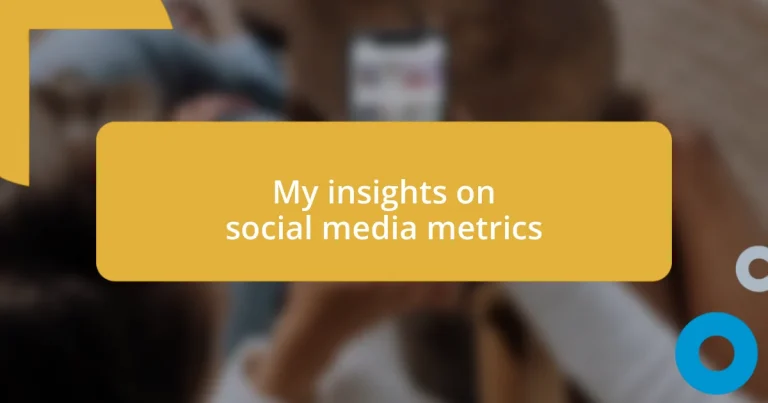Key takeaways:
- Engagement rate and actionable metrics are more important than just likes, as they reflect how well content resonates with the audience.
- Understanding and interpreting metrics together, such as engagement, reach, and sentiment, is essential for creating a meaningful online strategy.
- Clear reporting and visualization of metrics tailored to the audience enhance comprehension and foster actionable discussions for improvement.
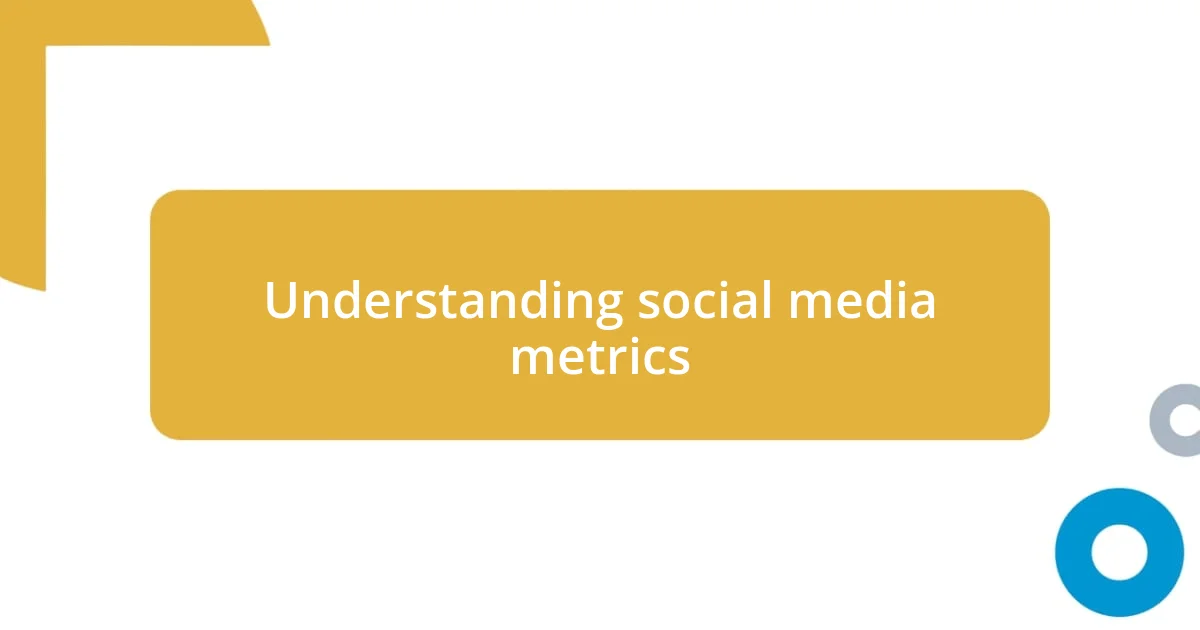
Understanding social media metrics
Understanding social media metrics can sometimes feel overwhelming, but I believe it’s crucial to grasp these figures as they directly impact your online strategy. For instance, when I first delved into these metrics, I was surprised to find that likes don’t tell the whole story. Engagement rate, which includes comments and shares, provides a more nuanced view of how your content resonates with your audience.
I remember tracking a post that had a high number of likes but minimal shares. This discrepancy made me realize that while people liked the content, they didn’t feel compelled to share it with their own networks. Have you ever noticed that certain posts spike in engagement while others fall flat? Understanding these patterns helps inform future content, guiding me toward what truly connects with my audience.
Additionally, reflecting on my journey, I’ve found that metrics like reach and impressions can reveal whether your content is even being seen. It’s one thing to create quality content, but if it’s not reaching your desired audience, it’s like shouting into the void. Have you had moments where you thought your message was clear, only to realize it wasn’t getting through? By digging into these metrics, I’ve learned that visibility truly matters in the crowded world of social media.
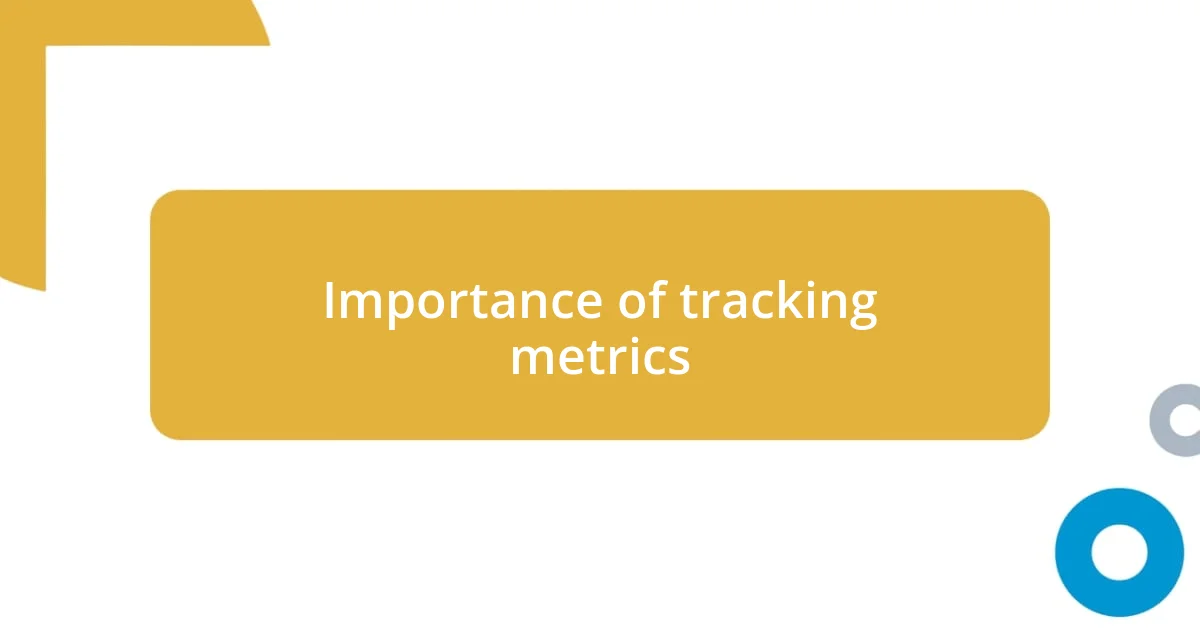
Importance of tracking metrics
Tracking social media metrics is a game changer for anyone looking to enhance their online presence. When I first started monitoring my social media performance, I had an “aha” moment when I realized that understanding metrics allows you to identify what truly matters to your audience. For example, I once had a post that received decent engagement but fell short in driving traffic to my website. That moment highlighted the importance of focusing on actionable metrics – the kind that translate interest into tangible results.
Here are some key reasons why tracking metrics is essential:
- Informed Decision-Making: Metrics guide your strategy, helping you to create content that resonates with your followers.
- Audience Insights: They reveal who your audience is and what they care about, allowing deeper connections.
- Performance Measurement: You can assess the effectiveness of campaigns and adjust accordingly.
- Resource Allocation: Metrics allow for smarter budgeting decisions on where to invest your time and money.
- Trend Identification: Keeping an eye on metrics helps spot emerging trends, letting you stay ahead of the curve.
By continuously analyzing these factors, I’ve developed a more effective approach, keeping my content relevant and engaging. It’s rewarding to see metrics not just as numbers, but as stories and opportunities to connect meaningfully with my audience.
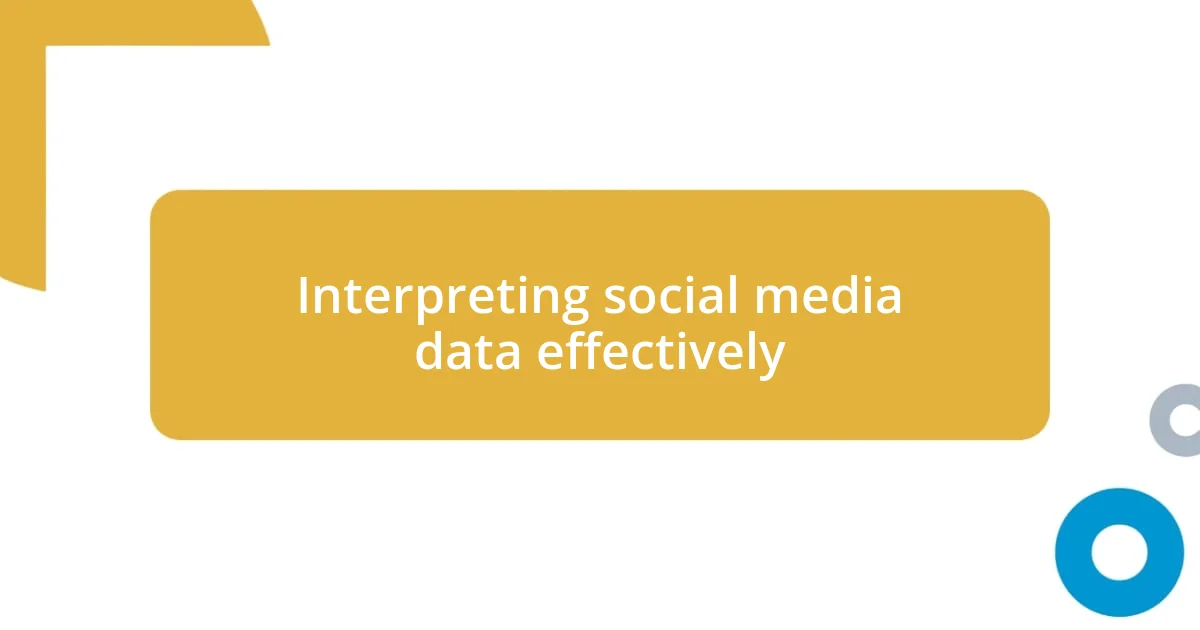
Interpreting social media data effectively
Interpreting social media data effectively is an art that can significantly influence your online strategy. I recall a particular marketing campaign that didn’t quite hit the mark. Despite a fantastic creative concept, the metrics told a different story. I learned that simply looking at follower count isn’t enough. Engagement, in terms of authentic interactions, is what truly indicates whether the audience values your content.
It can be easy to overlook certain metrics. For example, I was once fixated on increasing my post reach without considering audience sentiment. After digging deeper into the comments, I found intriguing feedback that pointed out areas for improvement. This revealed a gap between reach and resonance. It reminded me that metrics must be interpreted together for fuller insight. Have you experienced the gap between numbers and reality?
Tracking trends over time is also invaluable. When I charted my engagement rates, I noticed a consistent spike every time I shared personal stories. This led to a deeper understanding of my audience’s preferences, spotlighting the importance of authenticity in connection. The numbers transformed from mere data points into a narrative about what my community cherishes.
| Metric | What It Indicates |
|---|---|
| Engagement Rate | How effectively your content resonates with the audience |
| Reach | The total number of unique users who have seen your content |
| Impressions | The total number of times your content has been displayed, regardless of clicks |
| Sentiment Analysis | The overall attitude and feelings expressed in comments and shares |
| Click-Through Rate | The percentage of viewers who click on your links compared to impressions |
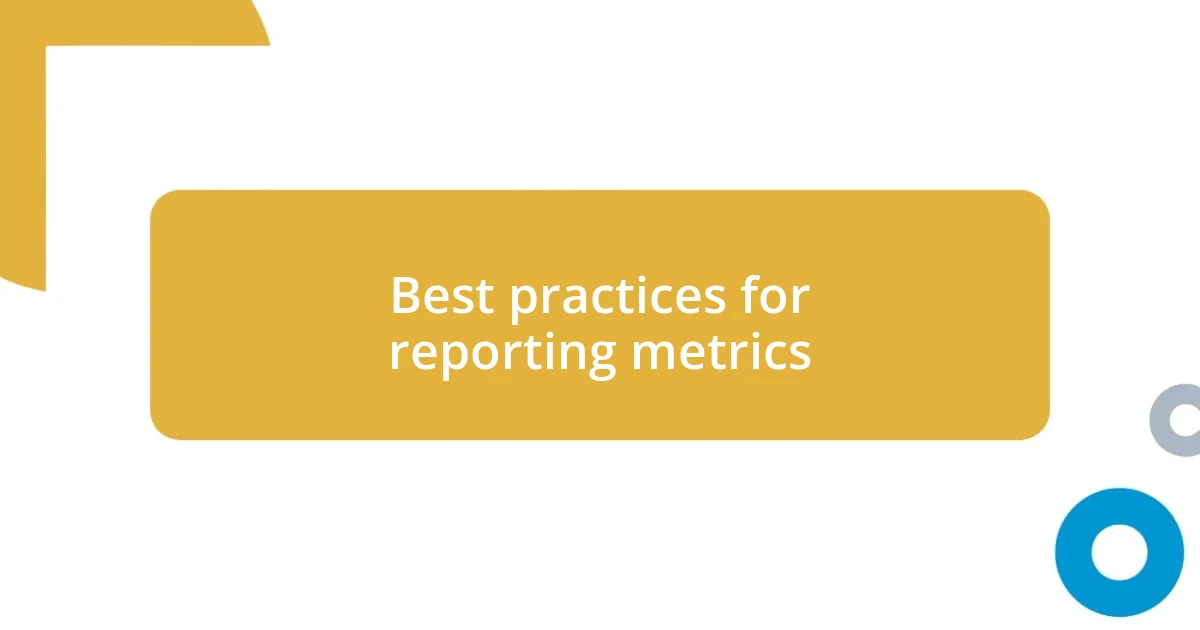
Best practices for reporting metrics
When reporting metrics, clarity is paramount. I remember the first time I compiled a report for my team; I felt overwhelmed with all the data. What I found useful was focusing on a few key metrics that told a coherent story. I learned that presenting data cleanly can make it easily digestible. Have you ever felt lost in a sea of numbers? Simplifying those metrics helped my team grasp the information quickly.
Another best practice involves tailoring the metrics to your audience. Just like every social media post should speak to your specific followers, your reports should resonate with stakeholders. I discovered that when I shared insights directly tied to their interests—like conversion rates for sales teams or engagement rates for content creators—everyone felt more invested in our strategy. This connection led to actionable discussions about what to improve next.
Lastly, visualization transforms metrics into impactful narratives. When I transitioned from simple tables to graphs and infographics, I noticed my audience engaged on another level. A well-constructed visualization can highlight trends, making insights accessible at a glance. I often ask myself, how can I use visuals to convey my story better? It’s been remarkable to see how even a simple pie chart can spark deeper conversations and insights about our performance.












